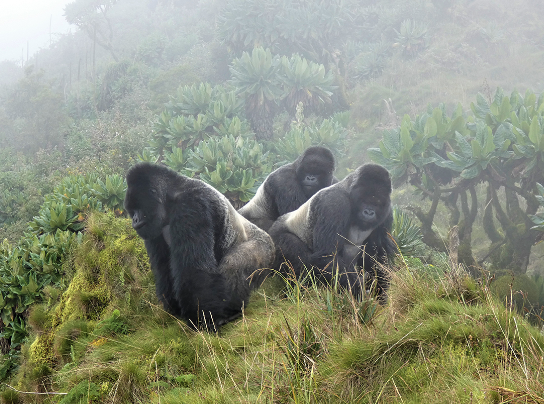The Role of Silverbacks in Protecting the Group
Silverbacks are the dominant males in gorilla troops, and their role in the group’s social structure is both fascinating and crucial. Understanding their protective behavior not only sheds light on gorilla dynamics but also highlights the importance of conservation efforts for these majestic animals.
The Protector of the Troop
Silverbacks serve as the central figure in a gorilla troop, responsible for maintaining peace and stability. Their sheer size and strength act as a deterrent against predators and rival groups. When a threat looms, such as the presence of a large predator or an aggressive male from another group, the silverback will often position himself between the danger and his family. This instinctual behavior fosters a sense of security among the females and young gorillas, allowing them to focus on foraging and nurturing the young, knowing they are safeguarded by their dominant leader.
Conflict Resolution and Group Cohesion
Beyond physical protection, silverbacks play a vital role in mediating conflicts within the group. Gorilla troops can experience internal strife, especially during mating seasons or resource shortages. The silverback’s presence helps manage these disputes, as he has the authority to intervene and restore harmony. By diffusing tensions, the silverback strengthens group cohesion, which is essential for the survival of the troop. This behavioral aspect emphasizes the importance of a stable leadership structure in animal societies and serves as a reminder of how social dynamics impact survival.
Teaching and Guiding the Young
Silverbacks also have an educational role within the troop. Young gorillas learn valuable survival skills by observing the silverback’s behavior. Whether it’s foraging for food, identifying dangers, or understanding social interactions, the silverback acts as a mentor. His demonstrations and decisions help the next generation develop critical life skills necessary for their eventual independence. The combination of protection and education creates a nurturing environment, ensuring the survival of the troop for years to come.
Conclusion
The role of silverbacks in protecting their gorilla troops is multifaceted, encompassing physical defense, conflict resolution, and education. As we continue to learn about these incredible animals, it’s crucial to support conservation efforts that aim to preserve their habitats and ensure their survival. By understanding the importance of silverbacks, we can advocate for the protection of these majestic creatures and their intricate social structures. To dive deeper into the world of gorillas, consider exploring documentaries or visiting wildlife reserves dedicated to their conservation.

